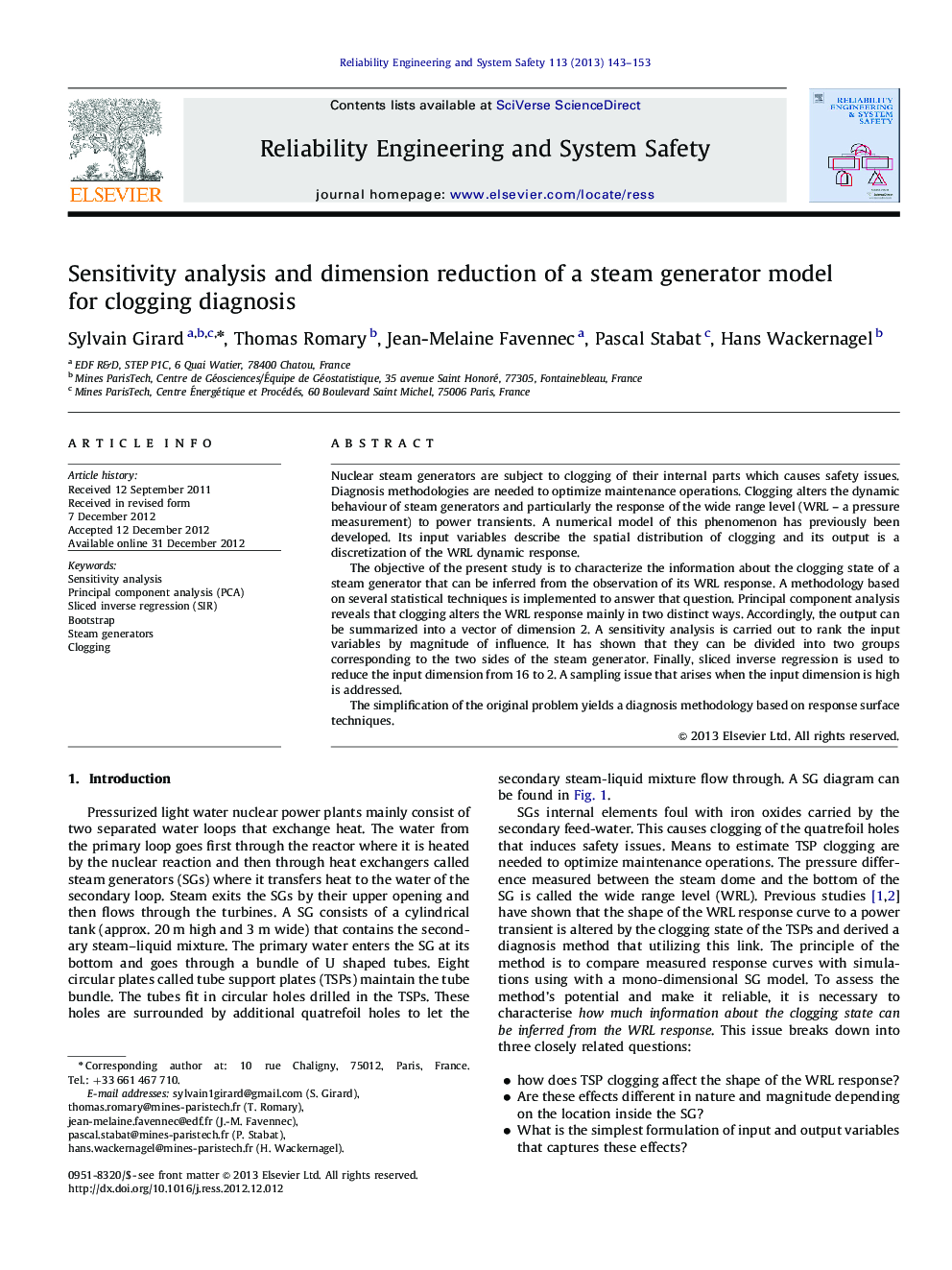| Article ID | Journal | Published Year | Pages | File Type |
|---|---|---|---|---|
| 806334 | Reliability Engineering & System Safety | 2013 | 11 Pages |
Nuclear steam generators are subject to clogging of their internal parts which causes safety issues. Diagnosis methodologies are needed to optimize maintenance operations. Clogging alters the dynamic behaviour of steam generators and particularly the response of the wide range level (WRL – a pressure measurement) to power transients. A numerical model of this phenomenon has previously been developed. Its input variables describe the spatial distribution of clogging and its output is a discretization of the WRL dynamic response.The objective of the present study is to characterize the information about the clogging state of a steam generator that can be inferred from the observation of its WRL response. A methodology based on several statistical techniques is implemented to answer that question. Principal component analysis reveals that clogging alters the WRL response mainly in two distinct ways. Accordingly, the output can be summarized into a vector of dimension 2. A sensitivity analysis is carried out to rank the input variables by magnitude of influence. It has shown that they can be divided into two groups corresponding to the two sides of the steam generator. Finally, sliced inverse regression is used to reduce the input dimension from 16 to 2. A sampling issue that arises when the input dimension is high is addressed.The simplification of the original problem yields a diagnosis methodology based on response surface techniques.
